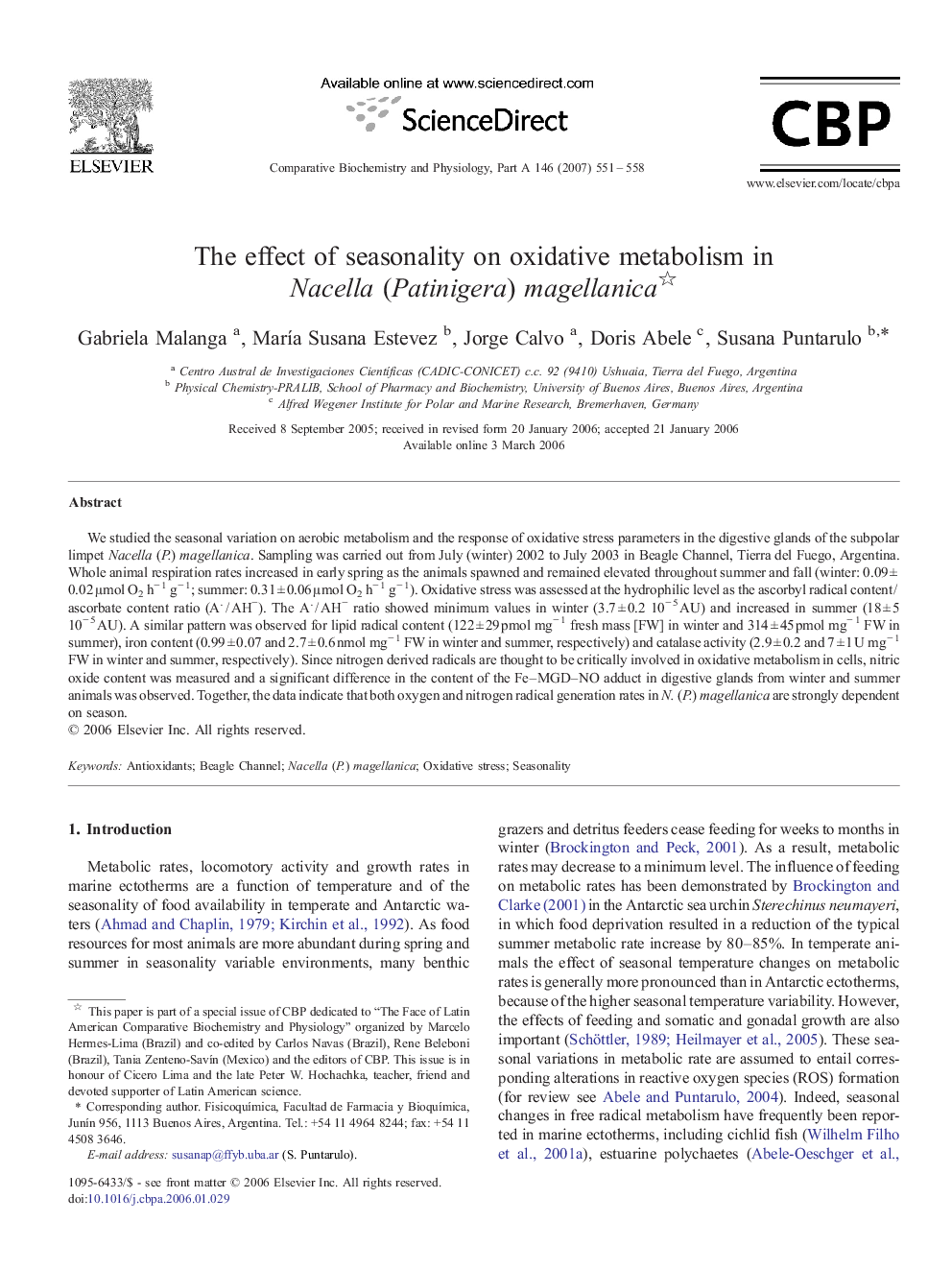| Article ID | Journal | Published Year | Pages | File Type |
|---|---|---|---|---|
| 1974876 | Comparative Biochemistry and Physiology Part A: Molecular & Integrative Physiology | 2007 | 8 Pages |
Abstract
We studied the seasonal variation on aerobic metabolism and the response of oxidative stress parameters in the digestive glands of the subpolar limpet Nacella (P.) magellanica. Sampling was carried out from July (winter) 2002 to July 2003 in Beagle Channel, Tierra del Fuego, Argentina. Whole animal respiration rates increased in early spring as the animals spawned and remained elevated throughout summer and fall (winter: 0.09 ± 0.02 μmol O2 hâ 1 gâ 1; summer: 0.31 ± 0.06 μmol O2 hâ 1 gâ 1). Oxidative stress was assessed at the hydrophilic level as the ascorbyl radical content / ascorbate content ratio (A / AHâ). The A / AHâ ratio showed minimum values in winter (3.7 ± 0.2 10â 5 AU) and increased in summer (18 ± 5 10â 5 AU). A similar pattern was observed for lipid radical content (122 ± 29 pmol mgâ 1 fresh mass [FW] in winter and 314 ± 45 pmol mgâ 1 FW in summer), iron content (0.99 ± 0.07 and 2.7 ± 0.6 nmol mgâ 1 FW in winter and summer, respectively) and catalase activity (2.9 ± 0.2 and 7 ± 1 U mgâ 1 FW in winter and summer, respectively). Since nitrogen derived radicals are thought to be critically involved in oxidative metabolism in cells, nitric oxide content was measured and a significant difference in the content of the Fe-MGD-NO adduct in digestive glands from winter and summer animals was observed. Together, the data indicate that both oxygen and nitrogen radical generation rates in N. (P.) magellanica are strongly dependent on season.
Related Topics
Life Sciences
Biochemistry, Genetics and Molecular Biology
Biochemistry
Authors
Gabriela Malanga, MarÃa Susana Estevez, Jorge Calvo, Doris Abele, Susana Puntarulo,
